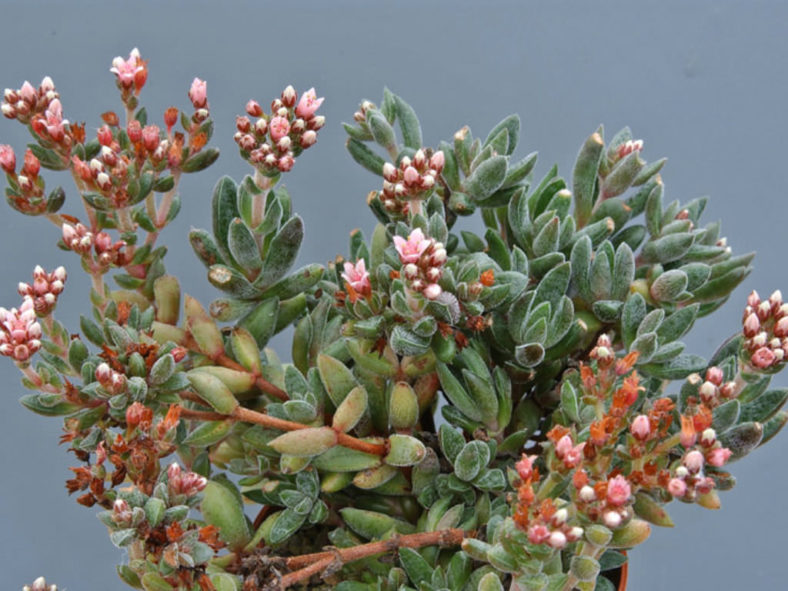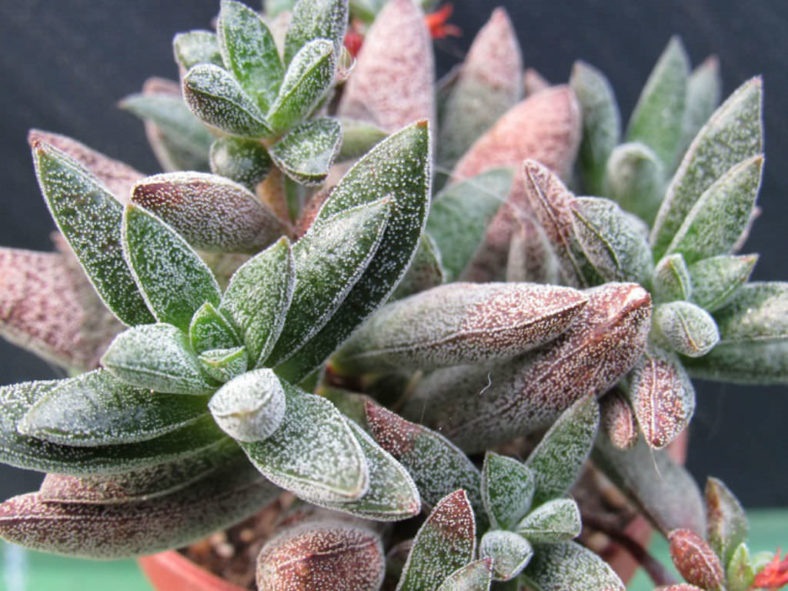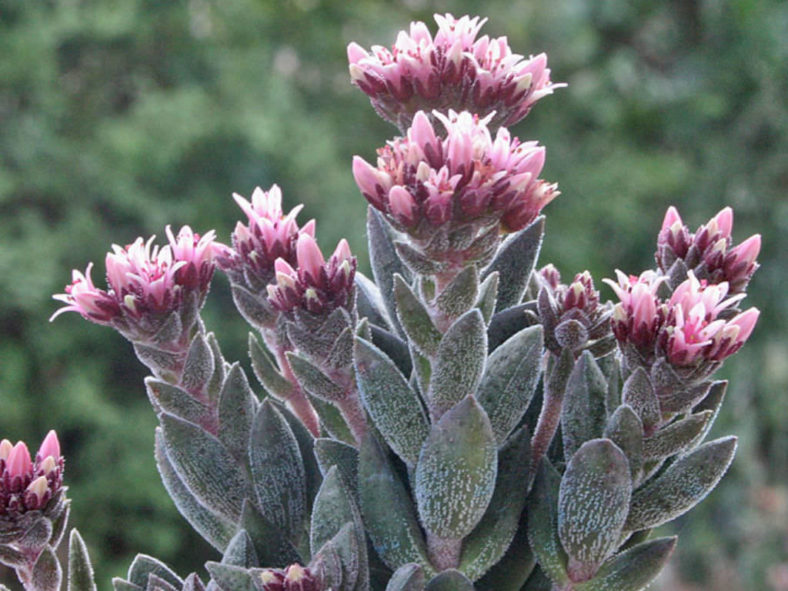Scientific Name
Crassula 'Justus Corderoy'
Synonym(s)
Crassula × justi-corderoyi
Scientific Classification
Family: Crassulaceae
Subfamily: Crassuloideae
Genus: Crassula
Etymology
The hybrid name honors Justus Corderoy (1832-1911), an English miller and succulent plant cultivator at Blewbury near Didcot, Berkshire (now Oxfordshire), United Kingdom.
Origin
Crassula 'Justus Corderoy' is a hybrid of Crassula exilis subsp. cooperi and Crassula perfoliata var. minor. It was first described by Nicholas Edward Brown in "Gardeners' Chronicle" in 1904.
Description
Crassula 'Justus Corderoy', also known as Crassula × justi-corderoyi, is a small succulent shrub that has reddish-brown stems and thick, fleshy, deep green leaves speckled with reddish-brown, which have a unique, silvery, velvety texture. It can grow up to 12 inches (30 cm) tall. The leaves are boat-shaped, typically measuring around 4.8 inches (12 cm) in length, though they are often shorter, and about 0.4 inches (1 cm) wide.
In the summer, Crassula 'Justus Corderoy' produces clusters of small, star-shaped pink flowers.

Forms of Crassula 'Justus Corderoy'
How to Grow and Care for Crassula 'Justus Corderoy'
Hardiness: USDA hardiness zone 9b to 11b: from 25°F (-3.9°C) to 50°F (10°C).
Crassulas are easy to grow but susceptible to mealybugs and fungal diseases. As with all succulents, overwatering is sure to be fatal, so err on the side of being too dry rather than too wet. Never let your plant sit in water. If you water from beneath by allowing the plant to sit in a saucer, ensure you pour off any excess water after a few minutes.
These succulents are generally started by division, offsets, or leaf cuttings. Crassulas can be easily propagated from a single leaf. Sprout leaves by placing them into a potting mix for succulents, then covering the dish until they sprout.
Repot as needed, preferably during the warm season. To repot your Crassula, ensure the soil is dry before repotting, then gently remove the pot. Knock away the old soil from the roots, removing any rotted or dead roots. Treat any cuts with a fungicide. Place the plant in its new pot and backfill it with potting soil, spreading the roots as you repot. Leave the plant dry for a week or so, then begin to water lightly to reduce the risk of root rot.
Learn more at How to Grow and Care for Crassula.
Links
- Back to genus Crassula
- Succupedia: Browse succulents by Scientific Name, Common Name, Genus, Family, USDA Hardiness Zone, Origin, or cacti by Genus
Photo Gallery


